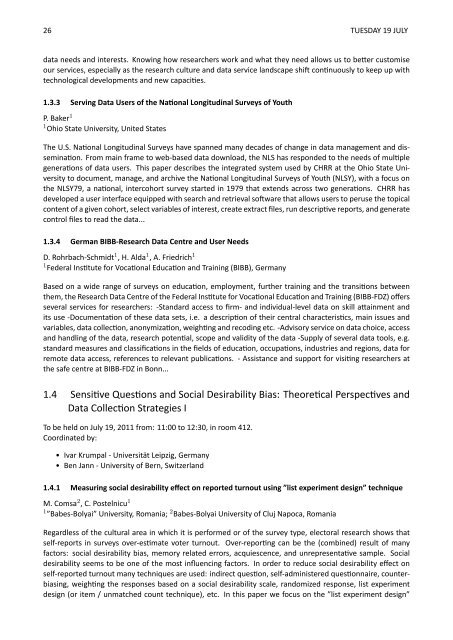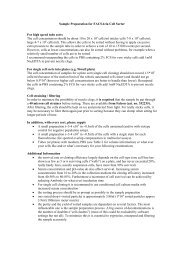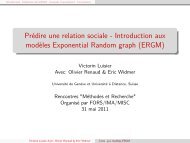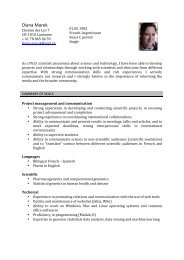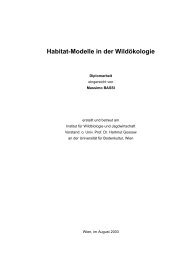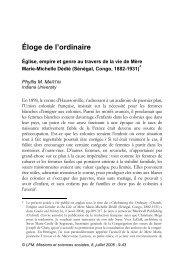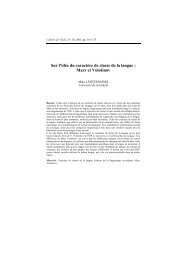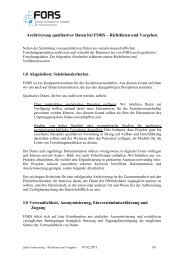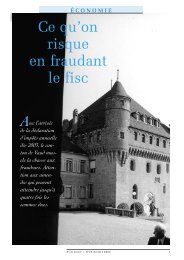conference programme book - European Survey Research ...
conference programme book - European Survey Research ...
conference programme book - European Survey Research ...
You also want an ePaper? Increase the reach of your titles
YUMPU automatically turns print PDFs into web optimized ePapers that Google loves.
26 TUESDAY 19 JULYdata needs and interests. Knowing how researchers work and what they need allows us to beer customiseour services, especially as the research culture and data service landscape shi connuously to keep up withtechnological developments and new capacies.1.3.3 Serving Data Users of the Naonal Longitudinal <strong>Survey</strong>s of YouthP. Baker 11 Ohio State University, United StatesThe U.S. Naonal Longitudinal <strong>Survey</strong>s have spanned many decades of change in data management and disseminaon.From main frame to web-based data download, the NLS has responded to the needs of mulplegeneraons of data users. This paper describes the integrated system used by CHRR at the Ohio State Universityto document, manage, and archive the Naonal Longitudinal <strong>Survey</strong>s of Youth (NLSY), with a focus onthe NLSY79, a naonal, intercohort survey started in 1979 that extends across two generaons. CHRR hasdeveloped a user interface equipped with search and retrieval soware that allows users to peruse the topicalcontent of a given cohort, select variables of interest, create extract files, run descripve reports, and generatecontrol files to read the data...1.3.4 German BIBB-<strong>Research</strong> Data Centre and User NeedsD. Rohrbach-Schmidt 1 , H. Alda 1 , A. Friedrich 11 Federal Instute for Vocaonal Educaon and Training (BIBB), GermanyBased on a wide range of surveys on educaon, employment, further training and the transions betweenthem, the <strong>Research</strong> Data Centre of the Federal Instute for Vocaonal Educaon and Training (BIBB-FDZ) offersseveral services for researchers: -Standard access to firm- and individual-level data on skill aainment andits use -Documentaon of these data sets, i.e. a descripon of their central characteriscs, main issues andvariables, data collecon, anonymizaon, weighng and recoding etc. -Advisory service on data choice, accessand handling of the data, research potenal, scope and validity of the data -Supply of several data tools, e.g.standard measures and classificaons in the fields of educaon, occupaons, industries and regions, data forremote data access, references to relevant publicaons. - Assistance and support for vising researchers atthe safe centre at BIBB-FDZ in Bonn...1.4 Sensive Quesons and Social Desirability Bias: Theorecal Perspecves andData Collecon Strategies ITo be held on July 19, 2011 from: 11:00 to 12:30, in room 412.Coordinated by:• Ivar Krumpal - Universität Leipzig, Germany• Ben Jann - University of Bern, Switzerland1.4.1 Measuring social desirability effect on reported turnout using ”list experiment design” techniqueM. Comsa 2 , C. Postelnicu 11 ”Babes-Bolyai” University, Romania; 2 Babes-Bolyai University of Cluj Napoca, RomaniaRegardless of the cultural area in which it is performed or of the survey type, electoral research shows thatself-reports in surveys over-esmate voter turnout. Over-reporng can be the (combined) result of manyfactors: social desirability bias, memory related errors, acquiescence, and unrepresentave sample. Socialdesirability seems to be one of the most influencing factors. In order to reduce social desirability effect onself-reported turnout many techniques are used: indirect queson, self-administered quesonnaire, counterbiasing,weighng the responses based on a social desirability scale, randomized response, list experimentdesign (or item / unmatched count technique), etc. In this paper we focus on the ”list experiment design”


